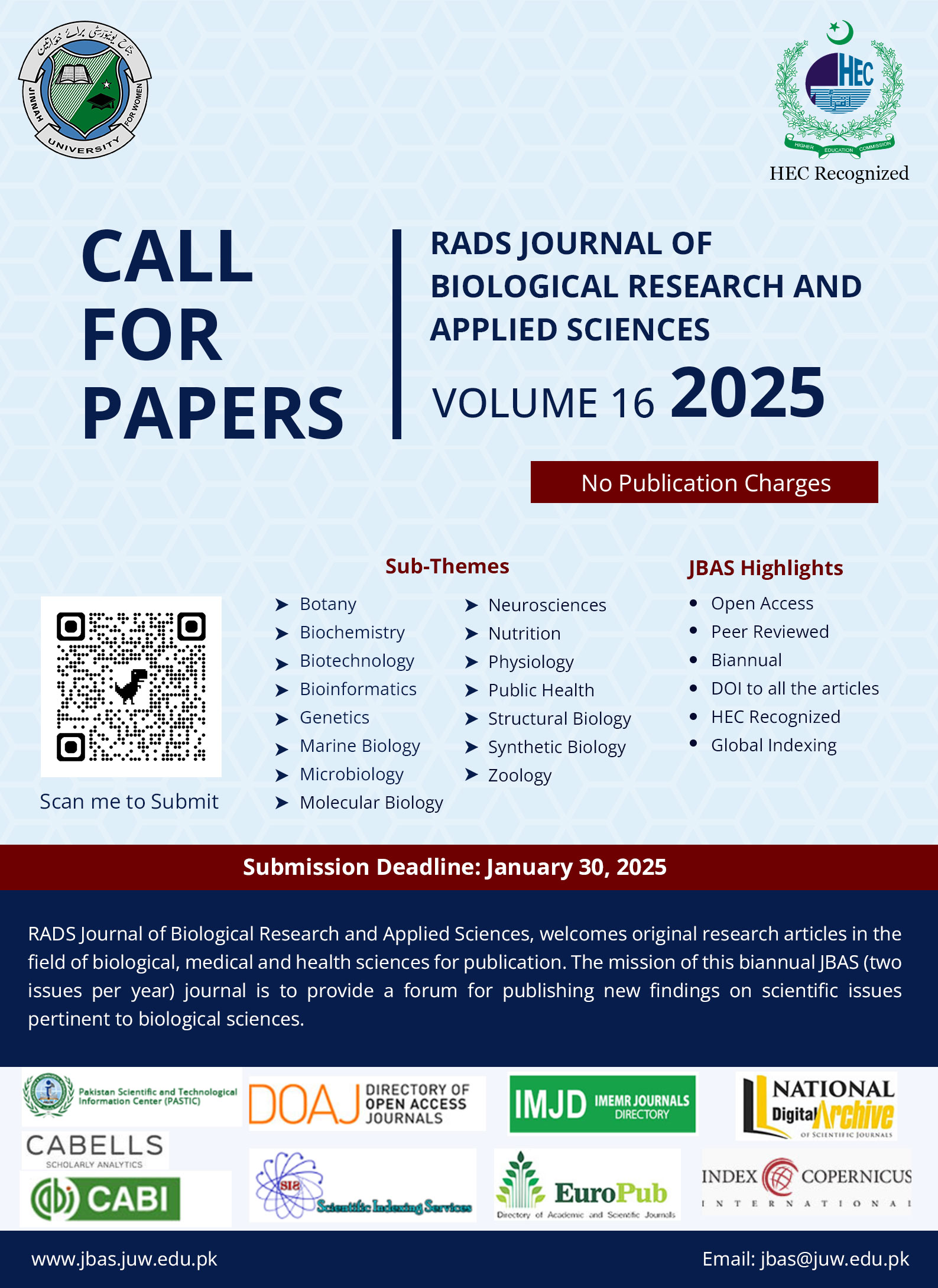Study of the Modulating Interactions of Multitrait Rhizobacteria Using Zea Mays L. as the Host Plant
DOI:
https://doi.org/10.37962/jbas.v10i2.161Keywords:
Rhizobacteria, PGP, plant-microbial interaction assay, PGPR, Zea mays.Abstract
Background: Rhizosphere is a soil region closest to roots of the plants inhabiting different types of microorganisms including rhizobacteria. Chemical fertilizers which are conventionally used for increasing crop production are dangerous in terms of minimizing the nutritional value of crops and may also be hazardous for biological agents. Therefore, the use of Plant Growth Promoting Rhizobacteria (PGPR) are favorable for improved crop production over chemical fertilizers.
Objectives: The current study highlights the growth promoting traits of bacterial isolates through isolation of rhizospheric bacterial strains from different plants.
Methodology: In this study, ten rhizospheric bacterial isolates were used, which were morpho-physiologically characterized and then tested for plant growth-promoting traits i.e., HCN production, ammonification and auxin production. Most of the bacterial strains gave positive results for these plant growth-promoting traits. To study the beneficial effects of these bacteria on plants, plant-microbial interaction assay was conducted using Zea mays.
Results: Results revealed that these bacteria enhanced the growth as compared to control plants. Bacterial isolates Streptomyces lydicus (Cn6), Staphylococcus aureus (Cn7) and Bacillus pumilus (PP3) showed strong ammonia producing effects. The isolates Bacillus subtilis (Cn2), PP2 and PP5 exhibited strong potential of HCN production whereas only Streptomyces lydicus (Cn6) and Bacillus pumilus (PP3) were observed to be auxin producers. A maximum increase in fresh weight of the plants was observed in treatment with PP2 showing 94.36% increase over controls. Cn1 showed an increase (26.12%) in shoot length while Cn5 revealed a prominent increase (64.95%) in root length compared to the control plant. The isolates Cn5 and Cn4 showed improvement in the total chlorophyll content of the treated plants with a percentage increase of 100% and 99.82%, respectively compared to the control.
Conclusion: In conclusion, these PGPR may be further used in agriculture research for growth improvement.


















